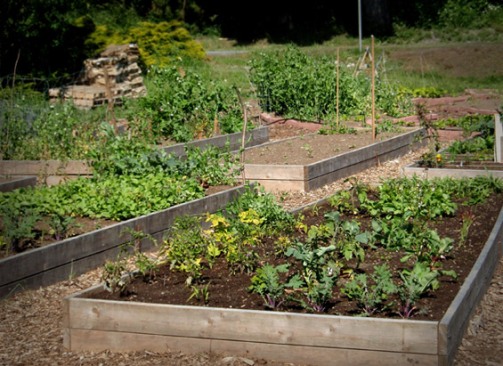Raised bed gardening works well for those whose gardens have poor soil conditions. Rather than overhauling the entire soil content of your home, you can turn to raised bed gardening, which means that you build a garden above the ground, giving you total control over soil quality, texture, and nutrition.
Raised bed gardening is all about creating a bed garden over your natural soil. You can choose to mix it with your natural soil, or not.

They can also come in contained forms, wherein you use a wooden structure to keep the bed in space, or they can also be created with free form, in different levels.
Raised bed gardening works for just about anything traditional gardening can do, from herbs, to vegetables, and simple flowers and plants.
If you are thinking about getting started with raised bed gardening, here are some benefits you can take a look at:
• They have better drainage than pots and your normal garden soil.
• You don’t have to worry about the bed garden getting compacted, because you can design them to be as accessible as you want.
• You have total control over the soil you need in your bed garden. You can even grow plants with different soil requirements by creating a border in between each bed, so as not to mix the soil. Tailoring is very easy and there are virtually no limitations to the size of the plots or the plants you want to grow.
• The bed gardens will warm quickly when spring comes, so you can plant earlier and work with the soil for more parts of the year.
• Once you’ve constructed what you need for raised bed gardening, everything else involved is extremely low-maintenance compared to traditional gardening.
When you’ve decided you’re ready for raised bed gardening, you can easily create your own. There are just a few simple steps involved:
1. Plan your garden area. This includes creating a sketch of your garden and other existing areas such as the patio and other walkways.
You can find some hidden areas where you may be able to make use of the raised bed gardening. You can also work with portable raised beds, as well as permanent ones.
2. Take into consideration the weight of the soil and the size of the bed, as these will determine if you will need reinforcement.
If your bed is made of wood and you’ll need reinforcement, metal stakes may be inserted into the planks for additional support. If your bed is made of bricks, mortar can be used to add reinforcement and ensure that the soil stays in place.
3. Once you’re done building your raised bed gardening, simply fill in your beds with soil. If your garden soil is healthy and you have had success growing plants through it, free of disease, you can use this soil, or mix with some new soil. However, if you have problem with soil, best to start with new, fresh soil.









Comments are closed.